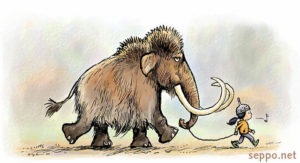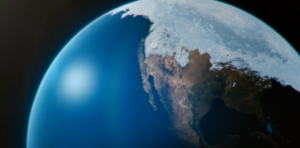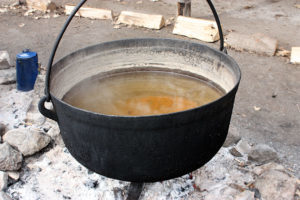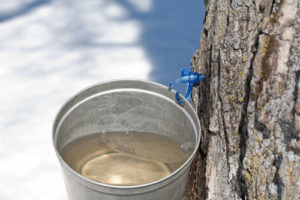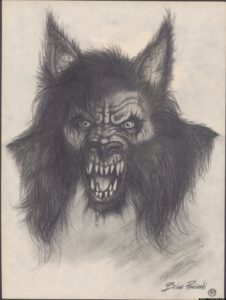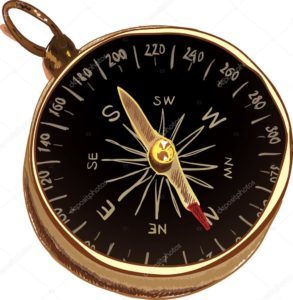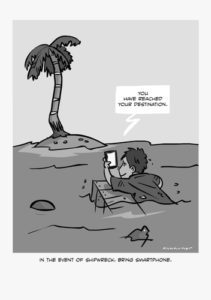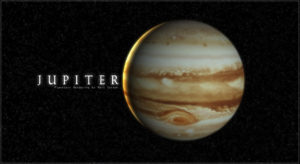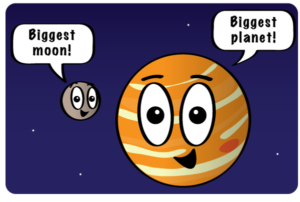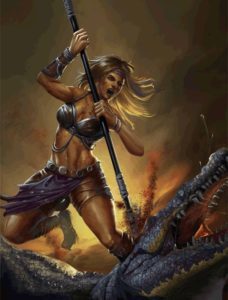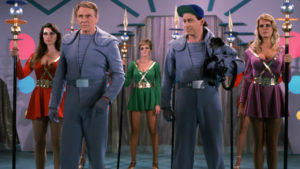R.A. Andrade's Blog, page 6
July 20, 2017
“The Field Trip” Discount
This is an informational post for those interested in purchasing a print copy of The Field Trip.
Amazon is currently selling The Field Trip in print version at a 43% discount.
The post “The Field Trip” Discount appeared first on R. A. Andrade.
July 15, 2017
Woolly Mammoth
The woolly mammoth, a prehistoric elephant-like mammal, existed with early humans during the most recent ice age. They emerged as a separate species about 400,000 years ago until becoming extinct concurrent with climate warming which ended the recent glaciation period, 10,000 years back. A few remote pockets of the woolly mammoth survived as recently as 4000 years in the past on Wrangel Island (Russian) in the Arctic Ocean.
Depicted in many early human and Neanderthal cave paintings, the woolly mammoths were roughly the size of current African elephants, standing 9 to 11 feet shoulder height. Primary characteristics were long coats of hair, and very long, curvy tusks of up to 14 feet in size. The demise of these magnificent, grass eating creatures who were adapted to a very cold climate is generally attributed to either the warming climate or over-hunting by our ancestors, or possibly a combination of both factors.
Why Are Woolly Mammoths Currently Newsworthy?
Scientist in both the United States and Russia have efforts underway to recreate live woolly mammoths through genetic engineering. Russian scientific rationale for reintroducing the prehistoric species relates to global warming. Their theory proposes the woolly mammoth would lower the temperature of the permafrost by encouraging the growth of steppe grasses which in turn reflect sunlight back into space thereby reducing heat absorbed by the Earth. What are the side effects of introducing a species that went extinct by natural selection 10,000 years ago? Because of the complex interaction of species currently existing, both plant and animal, and the complexity of the planet’s natural systems, the possible outcomes are beyond our imagination.
Note on Ice Ages
During most of our planet’s existence, the poles have been ice free; no polar caps. The first ice age occurred approximately 2.4 to 2.1 billion years ago. The age of the Earth is roughly 4.6 billion years old. The next documented ice age transpired about 850 million years ago, followed by 3 more occurring at closer intervals. The current ice age began about 2.58 million years ago with cycles of advancing and retreating ice sheets of 40,000 and 100,000 year cycles. Yes…we are currently still in an ice age but in a warmer period where glaciers retreat. The onset of glaciers advancing once again could be as early as within next 1000 years. But, global warming through human fossil fuel consumption byproducts is real. Some scientists estimate this effect will delay the natural cycle of glaciers advancing by at least another 5000 years. Clearly, the mechanisms contributing to the Earth’s climate cycles are exceedingly complex, leaving scientific predictive capabilities fraught with potential errors until all interactions are better understood. Forecast for the next decade and beyond is warmer…or maybe colder.
The post Woolly Mammoth appeared first on R. A. Andrade.
July 10, 2017
Maple Syrup
The mention of maple syrup brings to mind that tasty, sweet stuff used to drench pancakes, waffles, and French toast. I grew up using pancake syrup with names like Log Cabin, Mrs. Butterworth’s, and Aunt Jemima. Those are not maple syrups, instead using primary ingredients such as high fructose corn syrup, flavored and thickened. Most consumers generally prefer these imitations syrups because of the sweeter flavor and lower cost. True maple syrup is derived from the sap of maple trees…thus the name “maple syrup.” Funny how the naming thing works.
Northeastern North American tribes were the first groups known to have produced maple syrup. Both archaeological evidence and tribal traditions of Native Americans substantiate the processing of maple syrup long before Europeans settled in North America. During early colonization of northeastern North American, local Native American tribes showed the new European colonist how to tap the trunks of certain types of maples in the spring to harvest the sap.
The United States produced most of the world’s maple syrup until the 1930’s, when Canada became the largest. Canada produces more than 80 percent of the world’s maple syrup today. Vermont is the biggest U.S. producer, followed by New York. Maple syrup has been produced on a much smaller scale in some other countries, primarily Japan and South Korea.
So You Want To Make Some Yourself
Canadians joke if you want to make common, non-maple pancake syrups, then tap a utility pole. But if you want to make your own maple syrup the first item you need is a tree. Not any tree..a maple tree. It should be about at least a foot in diameter (30.48cm for Canadians.) Best types are: Sugar Maple, Black Maple, Red Maple, and Silver Maple. Birch and Walnut have also be used. Expect a yield of 1 gallon of maple syrup for every 40 gallons of sap. You will need buckets to collect the sap, a method of drilling a hole, a tap, cheesecloth and hooks. Sap usually starts flowing sometime between mid February and mid March, depending on your area. You should collect sap daily and it must be stored at 38 degrees Fahrenheit or colder. It should be boiled within 7 days of collection. Unless boiling small batches, boiling outdoors is the preferred area because of the amount of steam produced.
If after reading this you are potentially interested in making your own maple syrup, Tap My Trees website is a good resource for detailed instructions.
The post Maple Syrup appeared first on R. A. Andrade.
June 30, 2017
Return of Michigan Dogman
A comment submitted for the Michigan Dogman post in May requested more evidence videos for Dogman. If any readers have anything to contribute, it would be appreciated.
These are links to videos I found:
Michigan Dogman Werewolf Video
Police Officer Encounters Dogman
Real Werewolf Sightings Caught on Tape – Dogman (2016)
 Dogman Enlists in Military
Dogman Enlists in Military
The post Return of Michigan Dogman appeared first on R. A. Andrade.
June 25, 2017
Which Way Do I Go?
What is the best way to find your way around? If trying to drive around town near your home or to an unfamiliar destination, a navigation app on a smartphone is very cool. If you didn’t have one and someone dropped you in the middle of a forest, maybe not so cool. Moss on the north side of a tree doesn’t work very well.
Our ancestors found their way around by known landmarks, nothing like Golden Arches on a corner, but by natural features just as familiar to them. Traveling to new territory required navigation by the sun, moon, and stars. The Chinese invented one of the first navigation aids about 200-265 AD. They mounted a movable pointer in the form of a doll or figure with outstretch arms to their two wheel chariots to point to south. The pointer would be manually moved to point south before a journey and through a set of gears, would approximately retain the same direction as the vehicle traveled and made turns in the process. The system was essentially a directional dead reckoning, certainly prone to errors that grew greater the more distance traveled.
The compass, also invented by the Chinese sometime between the 2nd century BC and 1st century AD, was initially used fortune telling. It wasn’t until sometime between the 9th and 11th century that they applied the compass to navigation. Recorded appearance of the compass in Europe was around 1190 and 1232 in the Muslim world. The compass became the standard navigation tool for civilization whether traveling across land or sea.
The invention of the radio allowed the evolution of another navigation technology, a radio direction finder (RFD). The first experiments for this technology were actually carried out in 1888, but it eventually became a key factor for position location since World War I.
Then a guy named Ivan Getting with a degree in astrophysics who worked at Raytheon developed the first three-dimensional, position-finding system at the request of the U. S. Air Force and Navy. That became the basis of the future GPS. In 1983, GPS ended it existence as a military system and was declassified by President Ronald Reagan as a result of a civilian Korean Airline flight getting lost in Soviet air space. That plane was shot down by Soviet fighters. Full operation was achieved in 1995 with the completion of a system of 24 satellites. Since then, GPS capability has continued to improve with more satellites placed in orbit.
So now back to the opening of this post…if someone dropped you in the woods, should you have a smart phone or a hand held GPS? Or if you’re planning a trip by car, is your phone good enough or is a nav system better? Smartphones with apps for maps and navigation have evolved to the point where the convenience of using a phone for navigation outweighs the few minor advantages of a dedicated vehicle navigation system. Apart from a few small areas, the smartphone is a least as good, if not better. But what about the forest thing? If you are going to walk in a park or take a short hike, the convenience and capabilities for GPS using a smartphone is probably more than adequate. But if you plan serious hiking in remote areas, the benefits of a handheld, dedicated GPS device should be considered for the following major reasons:
Durability—Handheld GPS devices are waterproof and shockproof. A smartphone screen will crack if dropped and many of you have probably had some experience with smartphones and water. Sometimes putting them in rice overnight helps.
Battery Life—Many handheld GPS devices will go 15-20 hours and you can pop in another pair of AA batteries for revival after that point. Smartphone may give you 3-4 hours used for navigation if you’re lucky. Then you need to find an electrical outlet on some tree to charge it .
Accuracy—Good handhelds will have accuracy to 2 meters whereas a smartphone may be 15 to 20 meters off in heavy forest.
The post Which Way Do I Go? appeared first on R. A. Andrade.
June 24, 2017
The Reading
Edgar Allan Poe was an American writer (1809-1849) best known for his poems and short stories of mystery and the macabre. He is also considered the creator of the detective fiction genre. First printed in an anthology entitled, A Bit of Poe, the following tale was inspired by his work. This post is a deviation from the theme of other posts.
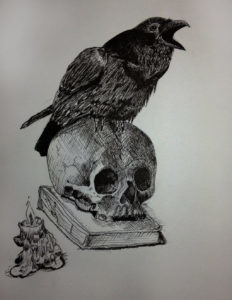 Art by Jay Roseberry
Art by Jay Roseberry
The Reading
R. A. Andrade
Five family members, dressed in black, filed into the dim, walnut-paneled room, silently anticipating their portion of Edgar’s two billion dollar fortune. Each in turn, took a seat at the stately mahogany conference table, some having hidden smiles escaping to the edges of their mouths. Edgar’s sixty-something first wife wiped a finger across the tabletop, revealing a swatch of shiny wood through the layer of dust. Examining her fingertips, her eyes widened, and then she shrieked.
All eyes turned to the terrified woman.
“When’s the last time someone cleaned this room?” she cried.
Eight large candles on the walls provided the only illumination in the room. Edgar’s forty-something second wife shivered with uneasiness. “It’s kind of dark in here, could you turn the lights on?” She squinted across the table in between the open Merlot wine bottles lining its center. The expressions on the faces of the two sons who were sitting there were barely discernible in the bad light.
A single sharp “caw” caused all five to clear their seats by inches. Everyone’s attention moved to the source of the noise, a large black bird perched in a cage that sat in a corner of the room and was adorned with ugly skull figures. “Birds give me the creeps,” Margaret uttered with a sneer. She was Edgar’s twenty-something third wife, a bride of only two weeks.
Allan, the family attorney, sat at the head of the table, his face masked in shadows. A crack of thunder jolted the family to jump in unison again. Adding to the discomfort, the lightning flash momentarily revealed a grotesque long scar across the attorney’s right cheek.
He cleared his throat, awaiting complete silence. All faces turned to him. “I apologize for the candle lit room and having this reading at midnight. It was specified by the deceased.”
The twenty-something son stared at one of the flickering flames and then interrupted, “Excuse me, but aren’t those LED’s? They’re not real candles.”
The attorney stretched his neck, pulled at his collar, and then explained, “Fire laws.”
Margaret, growing impatient, reached for the nearest bottle of wine, poured a full glass; the crimson liquid was black in the low light. She emptied it in one gulp. Instantly, her face contorted into a horrible mask and she clutched at her throat. “What the hell. This is Chardonnay! This isn’t a red wine.”
“Ran out of red,” Allan explained. “Used food coloring. Now if I may continue to the reason you are all here …”
“What’s with that weird bird over there?” the thirty-something son interjected.
“That’s Poe, the deceased’s pet raven of many years,” Allan answered.
Margaret turned her head, studied the creature, and then turned back to face Allan. “You do know that’s not a raven, don’t you? That’s a common crow. And where the hell did he keep that thing? I never saw it.” She paused thoughtfully, and then asked, “Do you have any gin in this place?”
Ignoring the request for alcohol, Allan said, “The deceased kept Poe in a hidden room so no harm would befall his beloved companion. Let’s get back to the will, shall we? I think you will all find this quite simple.”
All five leaned forward, their sight locked onto the obscure face. Not one took a breath.
The attorney continued, “Edgar’s total amassed fortune is given to….”
They all inhaled and held it.
“Poe, his pet raven.”
“Crow,” Margaret stated.
“OK lady, all his money goes to the bird,” Allan answered.
Twenty-something son shouted profanities at the barrister.
Thirty-something son pounded a fist on the table.
Sixty-something first wife wept.
Forty-something second wife reached for a bottle of colored Chardonnay.
Margaret calmly dropped her head. She opened the purse sitting in her lap. She withdrew a small, semiautomatic Berretta. She twisted in her chair and pointed the gun at the crow.
The bird gave a meek, pleading caw.
She fired.
A cloud of black feathers and a mist of red obscured the cage. Blood speckled the faces of the six in the room.
Margaret laid the weapon in front of her on the table, spit out a feather, and then said, “Oops.”
Copyright © 2013
The post The Reading appeared first on R. A. Andrade.
June 20, 2017
Jupiter The Planet
Jupiter, the largest planet in our solar system, is appropriately named after the King of the Ancient Roman gods. This giant fifth planet from the sun fits 11 Earths across its disc. Hydrogen and Helium comprises most of Jupiter’s atmosphere, transforming to liquid metallic hydrogen at lower altitudes. Some speculate there may be a solid core about the size of our Earth at its center, but the truth is unknown. Violent turbulence dominates the atmosphere, the iconic Giant Red Spot being an example of a storm persisting for centuries. That familiar feature is larger than Earth.
A major system of satellites also accompany the gas giant. In 1610, Galileo discovered Jupiter’s four largest moons, Callisto, Ganymede, Io, and Europa. More than 50 named moons are now known to orbit the planet and 16 provisional moons discovered but have not been named or giving official status. One of Jupiter’s moons, Ganymede is the largest in the solar system, even larger in diameter than the planet Mercury and dwarf planet Pluto. Three faint rings were revealed by NASA’s Voyager missions. The Juno spacecraft currently orbits Jupiter.
Life There
The possibility of life became a reality on some of Jupiter’s moons with the discovery of vast water oceans beneath thick shells of ice. But what of Jupiter itself? “Highly unlikely” is the general consensus. Although the building blocks of life are present in Jupiter’s atmosphere at some altitudes, including water vapor clouds, there is such turbulence it is difficult to imagine stable enough conditions for life to arise. But…life persists in areas on Earth with conditions that seem quite impossible, but yet there it is. Although a quote from science fiction, there is plausibility. “Life will find a way.”
The post Jupiter The Planet appeared first on R. A. Andrade.
June 13, 2017
Amazon Women
Did Amazon women exist, or are they a myth? The Amazon women story begins with eight-century poet, Homer. His work, the Iliad, told of fierce women who lived during the bronze age, 500 years earlier, who mated with male enemies and kept only the female babies they birthed. Stories of Amazons continued in the writings of poets, authors, and depicted by artists in paintings, sculptures and pottery. The stories placed these settlements of warrior women in the areas surrounding the Black Sea to western Siberia. Many of the tales arose in Greek mythology, associating Amazons with Hercules, Jason and the Argonauts, centaurs, and Atlantis. Amazons were depicted as imposing women, tall, fierce, waring upon great steads, frequently with bows as weapons. Some descriptions claimed Amazon women removed their left breasts to improve their prowess with the bow. All these accounts certainly gives clues to a myth of fantasy.
Despite the illusion of pure myth, I believe Amazons existed, although not of the extremes written about in the myriad of tales about them. Amazons were ordinary women who fought alongside their male counterparts in battle. They were trained to fight, but were the equal of men, not superior. Enemies unaccustomed to women in battle might certainly perceive a woman mounted on a large horse, dressed in warrior garb similar to men, and posed to release a deadly arrow from a bow, to be extraordinary in both stature and fearsomeness . Accounts of these encounters, with a few embellishments, gave rise to the Amazon legend. These were the women of the Scythian and Sarmatian cultures. Those cultures dominated the regions claimed for the Amazons in Greek mythology, and their warriors utilized horses and the bow for battle. Burial sites for those cultures also adds further evidence for the germ of the Amazon myth. Archaeologists found that about one-third of all Scythian women were buried with weapons and have war injuries like the men. The women were also buried with knives and daggers. These are the ancient Amazons…the equals of men.
Interesting side note: The Amazon River is named after Amazon women reportedly encountered during explorations there.
Where are the Amazons Now?
The photo below is from the Apollo 18 mission to the moon. You can clearly see that our astronauts were being held captive by Amazonian women.
The post Amazon Women appeared first on R. A. Andrade.
June 8, 2017
Are We Alone? & A Drabble
Like me, many of you reading this have looked up at the stars in the night sky and wondered. Is there intelligent life on a planet surrounding one of those stars gazing up at the night sky just like me? Maybe looking at our sun. Rather than attempt to summarize all that has been written about the odds of intelligent life besides our own in the universe, I will simply show a drabble of mine that was published a few years ago. Incidentally, a drabble is a story of about or exactly 100 words.
The Significant Event
The teen gazed at the icy points filling the night sky. So many stars meant countless planetary systems. He knew in his lifetime intelligent beings from other worlds would be discovered.
One of the stars grew noticeably brighter. Twisting his head, he stared at the light as it grew into a disc. He jumped to his feet, the object approaching at an incredible rate.
Rafordy’s head poked through the hatchway and looked down at the landing pad. Seeing the tips of four alien limbs jutting out from underneath it, he said, “They’re not going to like this back at Houston.”
The post Are We Alone? & A Drabble appeared first on R. A. Andrade.
June 6, 2017
Book Giveaway and Challenge
A Goodreads Giveaway for 5 copies of The Field Trip begins June 7th.
This website challenge for someone to come up with the theme for my posts remains open.
Link to the post that describes that challenge.
The post Book Giveaway and Challenge appeared first on R. A. Andrade.



